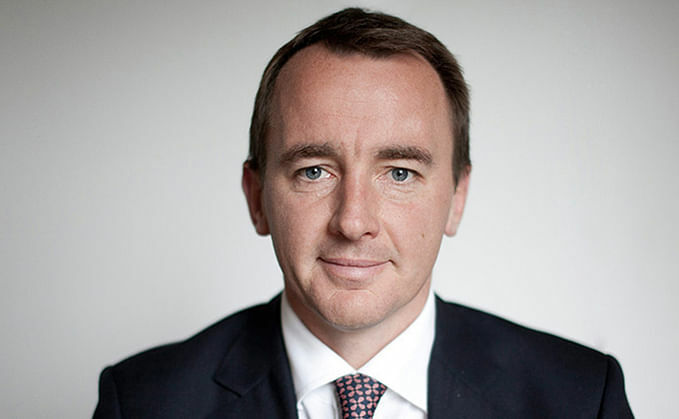
Mike Matthews, Invesco
Key takeaways
- Gilts have underperformed other government bond markets, and now offer yields that are at 15-year highs.
- When adding a further 1.5% from credit spread (the average for sterling corporate bonds), the asset class, yielding 6.5%, has rarely offered this much return.
- Of course, these higher yields are not without cause. But, for several reasons that we explore in this piece, we think there’s too much pessimism in the market.
It's been another disappointing year for the gilt market and sterling corporate bonds. And with sterling money markets now expecting Bank Rate to hit 6% by the end of the first quarter of 2024, investors are fearing it could only get worse. However, due to generous yields and a changing inflationary backdrop, we think sterling corporate bonds offer a good investment opportunity.
First, yields. Gilts have underperformed other government bond markets and now offer higher yields than US treasuries or other large western continental European markets. Gilt yields themselves are at 15-year highs. And when adding a further 1.5% from credit spread (the average for sterling corporate bonds), the asset class, yielding 6.5%, has rarely offered this much return.
Figure 1: Sterling corporate bond yields are at their most attractive level since the Global Financial Crisis
Source: Bloomberg as of 25 August 2023. Sterling corporate bonds represented by [index name]. Yield to maturity shown.
Of course, these higher yields are not without cause. Like other European economies, the UK has been highly exposed to gas prices. But it has also experienced many of the same labour market pressures as the US. In an inflation sense, it has had the worst of both worlds.
In response, the Monetary Policy Committee (MPC) has tightened monetary policy aggressively. But as energy price pressures have abated, the MPC has switched its focus towards domestic cost pressures. A significant component of this is wages, which have been growing at a record pace.
Unemployment data consistent with an inflation undershoot
We can understand the market's concern about the risk of a wage-price spiral, but we are focused on the loosening labour market as a guide to future wage growth. The latest Labour Force Survey recorded a rise in the unemployment rate to 4.2%, up sharply from 3.8% in April and now only marginally below the MPC's ‘equilibrium' estimate.
Figure 2: The UK unemployment rate has risen sharply since April
Source: Macrobond as of 30 June 2023.
In other words, UK unemployment has already risen enough to be consistent with the MPC's inflation target of 2%. Buried deeper in the report was the single-month unemployment estimate. At 4.6%, this is consistent with an inflation undershoot.
Despite these warning signs, the September rate hike is a foregone conclusion. But markets are pricing further hikes still in 2023. What could explain this hawkish narrative?
We suspect there are three reasons:
1) Concern that the UK is experiencing a 1970s-style wage-price spiral.
2) Concern that wages could keep rising as unemployment moves higher.
3) Concern that the MPC could hike further to insure against upside inflation risk.
Addressing the hawks: our outlook for interest rates
We are slightly sceptical about the prospects for a wage-price spiral. One defining feature of the 1970s wage spiral was persistent real wage growth, which boosted consumers' spending power and created an inflationary cycle. Today, real wages have only just recovered to pre-2007 levels and year-on-year rates are only just turning positive. We're experiencing a one-off ‘price-wage catchup' rather than a wage-price spiral.
Neither do we think that wages can keep increasing as unemployment rises. Labour supply is recovering rapidly just as demand for labour (as judged by the REC survey, the PMI employment gauge and the claimant count) is weakening. This is not a backdrop in which workers can continue to achieve significant increases in real pay.
The most convincing argument is insurance. The additional rate hikes protect the MPC against the worst-case inflationary scenario. Unlike traditional insurance where your cost is your premium, the cost for the MPC is a hike, which they can always reverse in the future. We think this scenario is increasingly likely.
Portfolio implications: what does this mean for sterling corporate bond investors?
So what does all of this mean for the gilt market and, by extension, sterling corporate bond investors?
The focus on current high levels of pay growth over growing labour market slack leaves gilts offering the potential for capital gain if, as we suspect, yields ultimately decline in response to cooling domestic inflation.
However, even without capital growth, gilt yields and therefore sterling corporate bond yields offer attractive value at their current levels. Shorter dated corporate bonds pay a return that was only available in the high yield markets a couple of years ago. Longer dated bonds offer a little less yield but have a greater potential for capital gain as the bond cycle turns.
With this value in mind, we have increased the interest rate risk of our sterling corporate bond strategies to their highest levels in many years, and beyond that of sterling benchmarks.
Sterling corporate bond funds at Invesco
At Invesco, we have been managing sterling corporate bond funds for over 25 years. Our time-tested approach is based on fundamental analysis, with a strong emphasis on valuation.
Investment risks
The value of investments and any income will fluctuate (this may partly be the result of exchange rate fluctuations) and investors may not get back the full amount invested.
Invesco Corporate Bond Fund (UK): The securities that the Fund invests in may not always make interest and other payments nor is the solvency of the issuers guaranteed. Market conditions, such as a decrease in market liquidity for the securities in which the Fund invests, may mean that the Fund may not be able to sell those securities at their true value. These risks increase where the Fund invests in high yield or lower credit quality bonds. The fund has the ability to make use of financial derivatives (complex instruments) which may result in the fund being leveraged and can result in large fluctuations in the value of the fund. Leverage on certain types of transactions including derivatives may impair the fund's liquidity, cause it to liquidate positions at unfavourable times or otherwise cause the fund not to achieve its intended objective. Leverage occurs when the economic exposure created by the use of derivatives is greater than the amount invested resulting in the fund being exposed to a greater loss than the initial investment.
The fund may be exposed to counterparty risk should an entity with which the fund does business become insolvent resulting in financial loss. The fund may invest in contingent convertible bonds which may result in significant risk of capital loss based on certain trigger events. The fund's performance may be adversely affected by variations in interest rates.
Invesco Sterling Bond Fund: Debt instruments are exposed to credit risk which is the ability of the borrower to repay the interest and capital on the redemption date. Changes in interest rates will result in fluctuations in the value of the fund. The fund uses derivatives (complex instruments) for investment purposes, which may result in the fund being significantly leveraged and may result in large fluctuations in the value of the fund. Investments in debt instruments which are of lower credit quality may result in large fluctuations in the value of the fund. The fund may invest in distressed securities which carry a significant risk of capital loss. The fund may invest extensively in contingent convertible bonds which may result in significant risk of capital loss based on certain trigger events.
Important information
All data is provided as at 31 August 2023, sourced from Invesco unless otherwise stated.
This is marketing material and not financial advice. It is not intended as a recommendation to buy or sell any particular asset class, security or strategy. Regulatory requirements that require impartiality of investment/investment strategy recommendations are therefore not applicable nor are any prohibitions to trade before publication.
Views and opinions are based on current market conditions and are subject to change.
Not all share classes of the Invesco Sterling Bond Fund may be available for public sale in all jurisdictions and not all share classes are the same nor do they necessarily suit every investor. For information on our SICAV funds and the relevant risks, refer to the Key Information Documents/Key Investor Information Documents (local languages) and Prospectus (English, French, German, Spanish, Italian), and the financial reports, available from www.invesco.eu. A summary of investor rights is available in English from www.invescomanagementcompany.lu. The management company may terminate marketing arrangements.
For the most up to date information on our ICVC funds, please refer to the relevant fund and share class-specific Key Investor Information Documents, the Supplementary Information Document, the financial reports and the Prospectus, which are available using the contact details shown.
Issued by Invesco Asset Management Limited which is authorised and regulated by the Financial Conduct Authority. Invesco Asset Management Ltd, Perpetual Park, Perpetual Park Drive, Henley-on-Thames, RG9 1HH, UK. Issued by Invesco Management S.A., President Building, 37A Avenue JF Kennedy, L-1855 Luxembourg, regulated by the Commission de Surveillance du Secteur Financier, Luxembourg.
EMEA 2023 3134608






